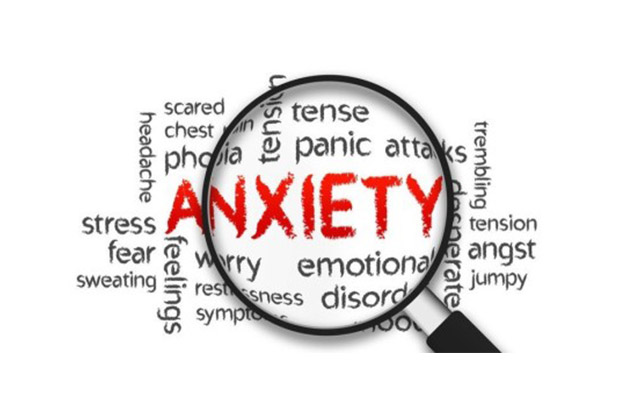Utilizing breathwork as an effective tool for the management of anxiety.

Introduction:
Anxiety is a common problem impacting millions of people globally in today’s fast-paced environment. Anxiety can stem from a variety of factors, including personal struggles, international crises, and pressures from the workplace and society. But in all of this confusion, there is one really useful instrument that everyone can use: breath. Using the power of conscious breathing, breathwork is an ancient technique that has become a powerful tool for anxiety management and general well-being. In this piece, we examine the science of breathwork and examine how well it works to reduce anxiety.
Understanding Anxiety:
Symptomatic of uneasiness, worry, and fear, anxiety is a normal reaction to stress or perceived threats. Anxiety is a natural part of life, but excessive or persistent anxiety can be harmful to one’s physical and emotional well-being. Numerous symptoms, such as racing thoughts, restlessness, tense muscles, and trouble focusing, can be brought on by persistent anxiety. Untreated anxiety can eventually lead to the emergence of more serious illnesses like depression, panic disorder, and generalized anxiety disorder (GAD).
The function of breath in anxiety:
Breath is an essential component of human physiology, acting as a link between the body and the mind. Our breathing directly affects our blood pressure, heart rate, and the balance of neurotransmitters in the brain, among other physiological states. Breathing frequently becomes quick and shallow during stressful or anxious periods, indicating the body’s fight-or-flight reaction. This shallow breathing pattern has the potential to increase anxiety levels by triggering the sympathetic nervous system, which is in charge of the body’s reaction to stress.
On the other hand, deliberate and regulated breathing exercises can stimulate the parasympathetic nervous system, which fosters peace and relaxation. Through attention to the breath and the application of targeted breathing techniques, people can mitigate the physiological impacts of worry and reestablish mental and physical balance.
The Science of Breathwork:
The goal of breathwork is to improve awareness and control of the breath through a variety of methods and practices. Although breathwork has been practiced for thousands of years in many spiritual and therapeutic traditions, current studies are starting to clarify the physiological and psychological impacts of breathwork.
Diaphragmatic breathing, sometimes referred to as abdominal or deep breathing, is one of the most researched types of breathwork. By using the diaphragm muscle, one may suck air into the lungs more deeply and produce slower, more rhythmic breathing. It has been demonstrated that diaphragmatic breathing lowers blood pressure, improves heart rate variability, a sign of stress resilience, and lowers stress chemicals like cortisol.
Dr. Andrew Weil is credited with popularizing the 4-7-8 breath as another well-liked breathwork method. Using this method, you will breathe in through your nose for four counts, hold your breath for seven counts, and then gently exhale through your mouth for eight counts. By prolonging the exhale phase, which triggers the body’s relaxation reaction, the 4-7-8 breath is intended to create a feeling of calm.
Apart from these methods, mindfulness-based exercises like breath awareness meditation stress the importance of watching the breath objectively and without bias. People can lessen their response to anxious thoughts and emotions and become more resilient to stressors by practicing present-moment mindfulness of their breath.
The advantages of breathwork in the treatment of anxiety:
Breathwork has several advantages for managing anxiety since it addresses both the mental and physical facets of health. Among the main advantages are:
1. Stress Reduction:
Breathwork encourages relaxation and lessens the physiological signs of stress by stimulating the parasympathetic nervous system. In the face of situations that cause anxiety, this can help people feel more composed and at ease.
2. Better Emotional management:
By establishing a buffer between stimulus and response, breathwork improves emotional awareness and management. People who practice mindfulness of breathing can become more resilient to emotional stimuli and learn to maintain composure.
3. Improved Cognitive Function:
Deep breathing exercises give the brain more oxygen, which enhances mental clarity and cognitive function. This can be especially helpful for people who have racing thoughts or cognitive distortions linked to worry.
4. Improved Sleep Quality:
By creating a relaxed state before to going to bed, breathwork can help reduce insomnia and improve the quality of sleep. People who incorporate breathwork into their nighttime relaxation ritual can sleep better and have more restful sleep.
5. Enhanced Self-Awareness:
By focusing inward, breathwork encourages reflection and self-awareness. People can have a better knowledge of their automatic breathing patterns and how they relate to stress and anxiety by practicing on a daily basis.
Effective Methods for Including Breathwork in Everyday Activities:
Breathwork integration doesn’t have to be difficult or time-consuming in daily life. The following are some doable methods for introducing breathwork into your daily practice:
1. Morning Ritual:
To create a pleasant vibe for the day, begin each morning with a few minutes of meditative breathing. Breathe deeply and diaphragmatically to help your body get oxygen and to help you relax.
2. Mini-Breaks:
Take brief pauses during the day to reset your nervous system and check in with your breathing. Consciously breathing for even a short while can help reduce stress and increase attention and clarity.
3. Before Going to Bed:
Use a guided meditation or a relaxation technique like the 4-7-8 breath to unwind at night. This can assist in calming the mind and getting your body ready for sound sleep.
4. Integration with tasks:
Walk, stretch, or do the dishes as examples of regular tasks that you can include breathwork into. Take use of these times to develop presence and mindfulness of the breath.
5. Formal Practice:
Schedule a certain period of time for formal breathwork exercises, like breath awareness meditation or guided breathing exercises. In order to fully benefit from breathwork for anxiety control, consistent practice is essential.
Conclusion:
Breathing exercises provide a straightforward yet effective method for reducing anxiety and enhancing general wellbeing. People can develop stronger resistance to stress and hardship and access their body’s natural relaxation response by learning to use their breath. Incorporating breathwork into daily life, whether via mindfulness exercises, deep breathing exercises, or relaxation techniques, can enable people to take charge of their mental and emotional well-being. Let us keep in mind the breath’s great knowledge and its capacity to lead us back to a state of equilibrium and tranquility while we negotiate the difficulties of contemporary life.




